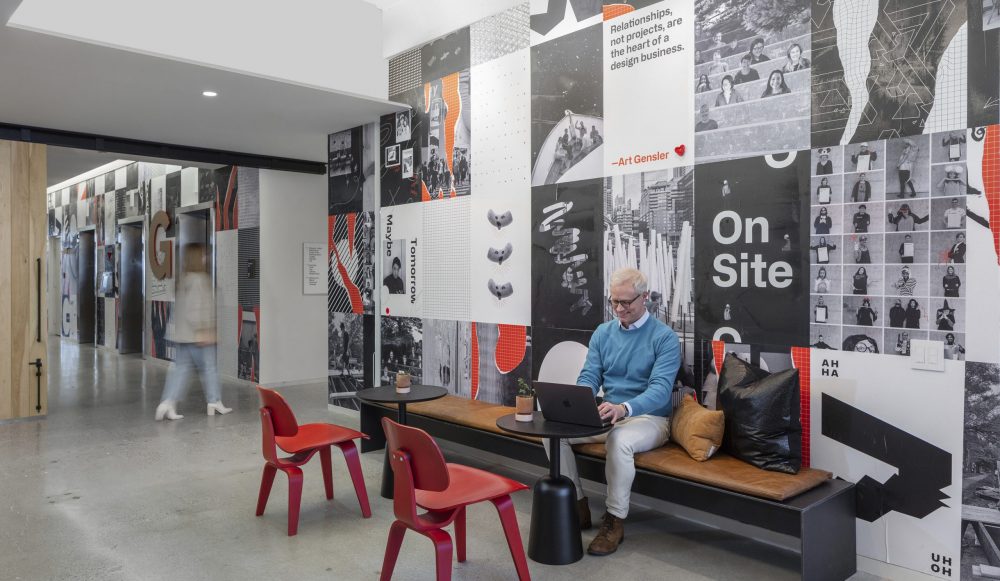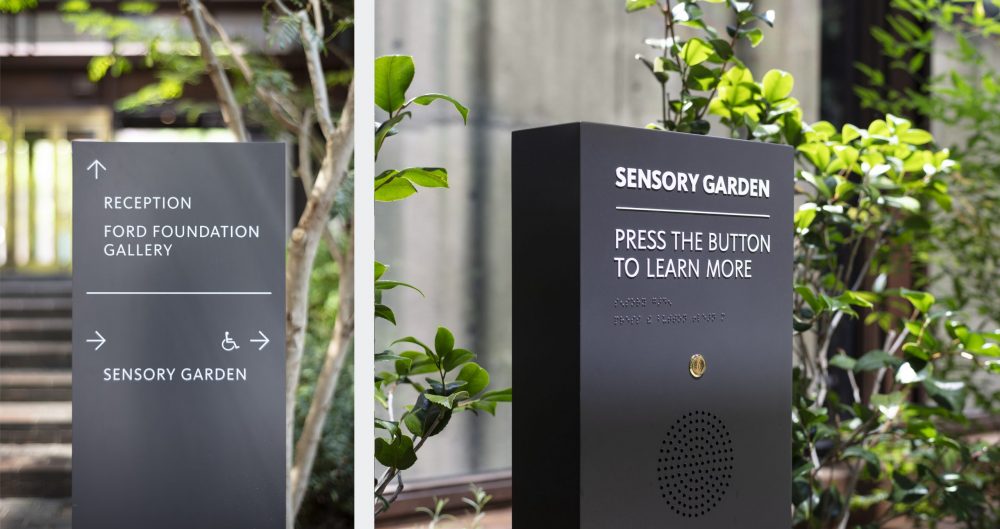Beth Novitsky of Gensler explores three ways to tell a more inclusive story in the workplace.
Companies today have placed a renewed focus on creating inclusive environments and experiences for employees and visitors—going beyond ADA requirements to create spaces where everyone will feel welcome. Given the opportunity to renovate or relocate offices, designers and architects can reference a wide array of research on space types, adjacencies, and products from chairs to drawer pulls.
But what about other, less expansive ways to make a space feel inclusive? Truly inclusive experiences account for the needs of individuals with a variety of needs and abilities; but also help to build a culture of inclusivity. By integrating thoughtful programs into an existing space, an organization can signal that it truly cares about making everyone feel comfortable and welcome. These initiatives—whether a signage program, an employee communications program, or a branded workplace—can also bring renewed energy and relevance to the employee experience.
To make inclusive programs successful, it’s important to align with an organization’s authentic culture and brand values. Otherwise, the effort might be perceived as pandering, gratuitous, or out of touch. As Gensler brand design principal Janice Cavaliere puts it, “Today’s consumers are asking brands to have a meaningful point of view around social issues, like equity, health, and climate. And employees are expecting the same from their employers.” As the physical embodiment of an organization and its culture, the workplace is the best environment to communicate this sentiment. Here are three ways to tell a more inclusive story in the workplace.
1. Include employees as co-authors of the experience.
As a social media company, LinkedIn understands the importance of ensuring that team members feel like they belong to something bigger. Brand experience and storytelling are integral parts of LinkedIn’s community and culture-building strategy, with each office location designed to reflect local stories informed by research and dialogue with employees. The resulting murals and 3D installations—clever, memorable, and primed for social media—are then shared by employees on the platform to create an extended online community, dubbed #linkedinlife, that is a blend of the physical and digital worlds.
In the LinkedIn Atlanta offices, for example, the design team began by facilitating workshops on diversity, the local community, and employee culture. The resulting graphic narrative inspires a sense of purpose and pride, with a series of stories that celebrate Atlanta’s unique strengths. The feature mural, titled “Together We Rise,” depicts the city’s symbol of resilience: the phoenix. After Atlanta burned to the ground during the Civil War, the city was completely rebuilt, and the phoenix has become a metaphor for a community that has historically fought against injustice. Details in the mural show iconic Atlanta civil rights leaders John Lewis and Dr. Martin Luther King, Jr., along with subtler references including the logos of community organizations and LinkedIn’s own employee resource groups. The mural reminds team members that together we can create great change.

Other interactive installations foster a sense of community within the workplace and encourage employees to exchange and share ideas. The ’connect to opportunity’ space, for example, allows employees to add their name to the tassel showcase to give that sense of pride to their alma mater. These stories not only build company culture, but prompt employees to dream big and continue to fight for opportunity for all.

2. Create a flexible, resilient space that can adapt over time.
In 2022, the Gensler Seattle team saw an opportunity to reimagine their workplace to be more effective for the new blend of digital, physical, and hybrid work that emerged from the pandemic. The overall concept, dubbed the “Workshop,” embodies our commitment to craft, exploration, and collaboration. At the lobby entry, walls are lined with wheat-pasted posters designed to tell the story of our people and work. Sketches, screenshots, and musings are loosely layered, and can be added to over time to highlight the office’s work and culture. Here, and in other areas, the program brings to light the amazing work of our BIPOC and LGBTQ+ designers. The flexibility of the program allows for easy adaptation and change over time.

3. Consider the details.
Even smaller program details can be inspired by principles of inclusive design: legibility, usability, and multisensory elements all communicate an open, welcoming culture. Utilizing high-contrast color palettes and specific color combinations, for example, allow for ultimate legibility by those who are visually impaired and color blind. While online tools can be used to measure legibility and contrast, rigorous prototyping and testing in real-world situations with a broad range of end users is another important part of the process, and provides an additional feedback loop.
Besides visuals, think about employing sound and touch to assist with wayfinding or to encourage people to engage on different levels. For example, the Ford Foundation Center for Social Justice in New York placed equity and inclusivity front and center in order to reflect its mission: to promote “the inherent dignity of all people.” In the atrium, we revamped the original garden to be more easily accessible to the public via wheelchairs and strollers. A new “sensory garden” provides those with vision and hearing impairments the opportunity to learn about the plants through touch, aided by signage totems and audio installations.

And finally, signage can help to emphasize inclusivity by calling attention to specific policies. Is there an area in the office that’s dog-friendly? Quiet zones where phone usage is discouraged and external stimuli are kept to a minimum? Are spaces dedicated to alternative uses such as prayer and meditation visible and celebrated? How are restrooms labeled? Even small details can send an important signal.

With the right story, input from local teams, and sophisticated, thoughtful physical integration, branded environments and culture-building programs can underscore an organization’s commitment to building an inclusive community by including employees in the process, designing flexible and resilient spaces, and by considering how smaller details can help create a better environment for everyone. The physical environment needs to facilitate inclusive interactions within communities: The ultimate goal is to create inclusive behaviors and experiences, not just places.


